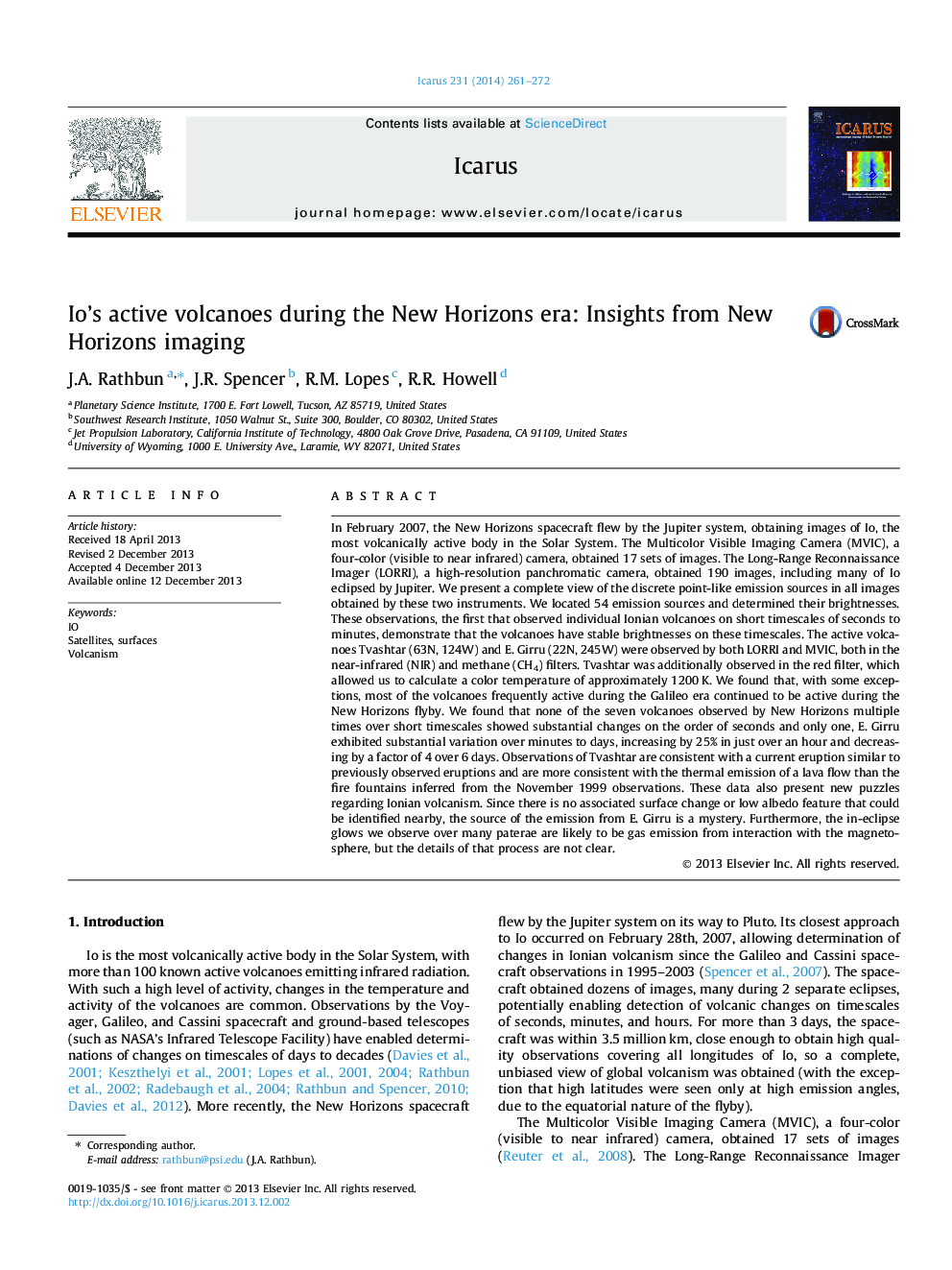| کد مقاله | کد نشریه | سال انتشار | مقاله انگلیسی | نسخه تمام متن |
|---|---|---|---|---|
| 8138618 | 1523559 | 2014 | 12 صفحه PDF | دانلود رایگان |
عنوان انگلیسی مقاله ISI
Io's active volcanoes during the New Horizons era: Insights from New Horizons imaging
ترجمه فارسی عنوان
آتشفشان فعال یو در دوران افق های جدید: بینش از تصویربرداری افق های جدید
دانلود مقاله + سفارش ترجمه
دانلود مقاله ISI انگلیسی
رایگان برای ایرانیان
موضوعات مرتبط
مهندسی و علوم پایه
علوم زمین و سیارات
علوم فضا و نجوم
چکیده انگلیسی
In February 2007, the New Horizons spacecraft flew by the Jupiter system, obtaining images of Io, the most volcanically active body in the Solar System. The Multicolor Visible Imaging Camera (MVIC), a four-color (visible to near infrared) camera, obtained 17 sets of images. The Long-Range Reconnaissance Imager (LORRI), a high-resolution panchromatic camera, obtained 190 images, including many of Io eclipsed by Jupiter. We present a complete view of the discrete point-like emission sources in all images obtained by these two instruments. We located 54 emission sources and determined their brightnesses. These observations, the first that observed individual Ionian volcanoes on short timescales of seconds to minutes, demonstrate that the volcanoes have stable brightnesses on these timescales. The active volcanoes Tvashtar (63N, 124W) and E. Girru (22N, 245W) were observed by both LORRI and MVIC, both in the near-infrared (NIR) and methane (CH4) filters. Tvashtar was additionally observed in the red filter, which allowed us to calculate a color temperature of approximately 1200Â K. We found that, with some exceptions, most of the volcanoes frequently active during the Galileo era continued to be active during the New Horizons flyby. We found that none of the seven volcanoes observed by New Horizons multiple times over short timescales showed substantial changes on the order of seconds and only one, E. Girru exhibited substantial variation over minutes to days, increasing by 25% in just over an hour and decreasing by a factor of 4 over 6Â days. Observations of Tvashtar are consistent with a current eruption similar to previously observed eruptions and are more consistent with the thermal emission of a lava flow than the fire fountains inferred from the November 1999 observations. These data also present new puzzles regarding Ionian volcanism. Since there is no associated surface change or low albedo feature that could be identified nearby, the source of the emission from E. Girru is a mystery. Furthermore, the in-eclipse glows we observe over many paterae are likely to be gas emission from interaction with the magnetosphere, but the details of that process are not clear.
ناشر
Database: Elsevier - ScienceDirect (ساینس دایرکت)
Journal: Icarus - Volume 231, 1 March 2014, Pages 261-272
Journal: Icarus - Volume 231, 1 March 2014, Pages 261-272
نویسندگان
J.A. Rathbun, J.R. Spencer, R.M. Lopes, R.R. Howell,
